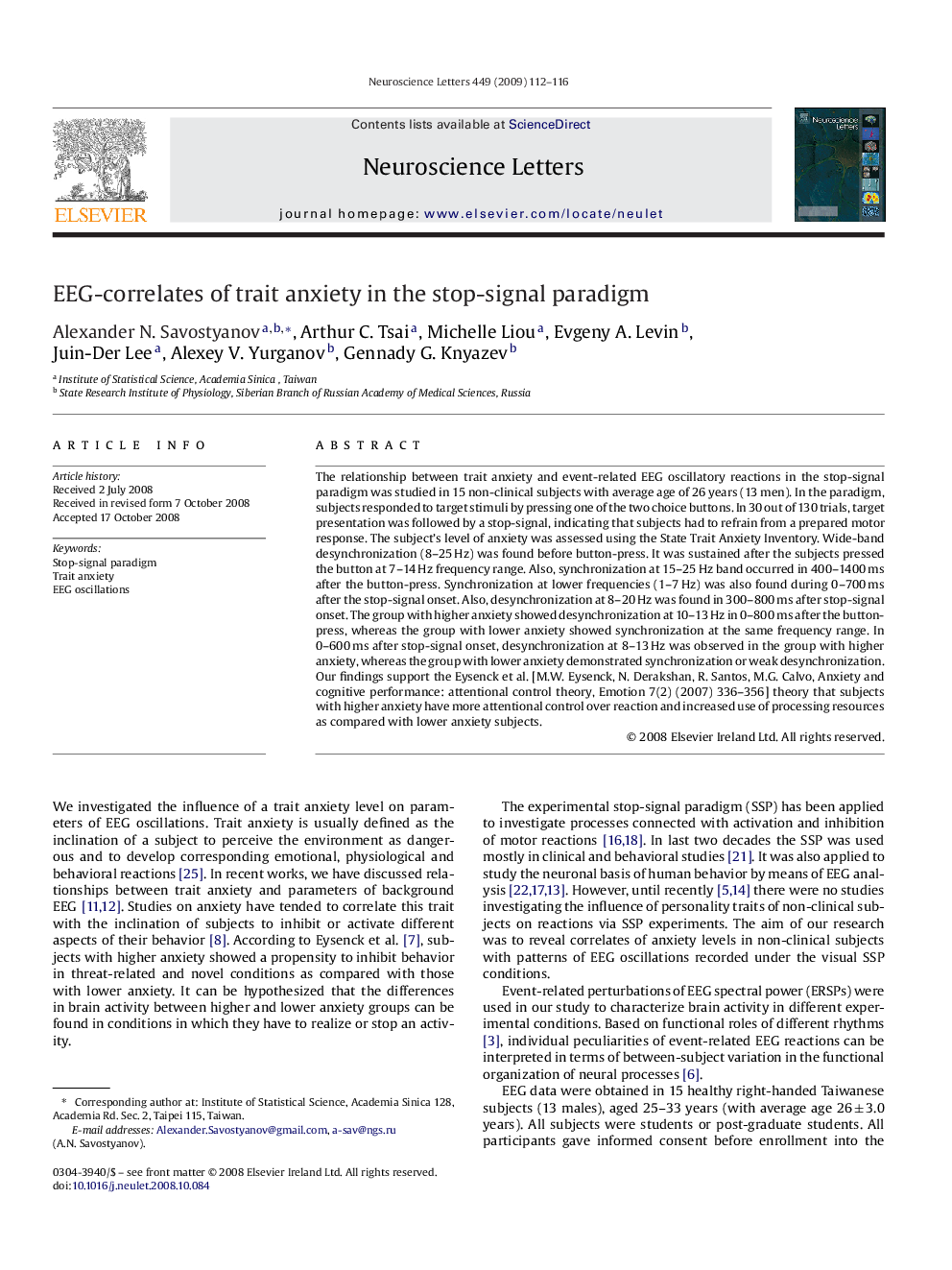| کد مقاله | کد نشریه | سال انتشار | مقاله انگلیسی | نسخه تمام متن |
|---|---|---|---|---|
| 4347596 | 1296851 | 2009 | 5 صفحه PDF | دانلود رایگان |
عنوان انگلیسی مقاله ISI
EEG-correlates of trait anxiety in the stop-signal paradigm
دانلود مقاله + سفارش ترجمه
دانلود مقاله ISI انگلیسی
رایگان برای ایرانیان
کلمات کلیدی
موضوعات مرتبط
علوم زیستی و بیوفناوری
علم عصب شناسی
علوم اعصاب (عمومی)
پیش نمایش صفحه اول مقاله

چکیده انگلیسی
The relationship between trait anxiety and event-related EEG oscillatory reactions in the stop-signal paradigm was studied in 15 non-clinical subjects with average age of 26 years (13 men). In the paradigm, subjects responded to target stimuli by pressing one of the two choice buttons. In 30 out of 130 trials, target presentation was followed by a stop-signal, indicating that subjects had to refrain from a prepared motor response. The subject's level of anxiety was assessed using the State Trait Anxiety Inventory. Wide-band desynchronization (8-25Â Hz) was found before button-press. It was sustained after the subjects pressed the button at 7-14Â Hz frequency range. Also, synchronization at 15-25Â Hz band occurred in 400-1400Â ms after the button-press. Synchronization at lower frequencies (1-7Â Hz) was also found during 0-700Â ms after the stop-signal onset. Also, desynchronization at 8-20Â Hz was found in 300-800Â ms after stop-signal onset. The group with higher anxiety showed desynchronization at 10-13Â Hz in 0-800Â ms after the button-press, whereas the group with lower anxiety showed synchronization at the same frequency range. In 0-600Â ms after stop-signal onset, desynchronization at 8-13Â Hz was observed in the group with higher anxiety, whereas the group with lower anxiety demonstrated synchronization or weak desynchronization. Our findings support the Eysenck et al. [M.W. Eysenck, N. Derakshan, R. Santos, M.G. Calvo, Anxiety and cognitive performance: attentional control theory, Emotion 7(2) (2007) 336-356] theory that subjects with higher anxiety have more attentional control over reaction and increased use of processing resources as compared with lower anxiety subjects.
ناشر
Database: Elsevier - ScienceDirect (ساینس دایرکت)
Journal: Neuroscience Letters - Volume 449, Issue 2, 9 January 2009, Pages 112-116
Journal: Neuroscience Letters - Volume 449, Issue 2, 9 January 2009, Pages 112-116
نویسندگان
Alexander N. Savostyanov, Arthur C. Tsai, Michelle Liou, Evgeny A. Levin, Juin-Der Lee, Alexey V. Yurganov, Gennady G. Knyazev,